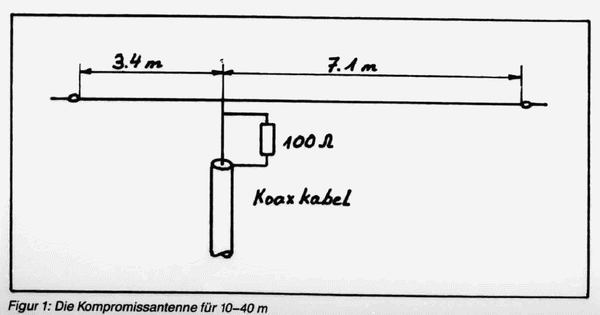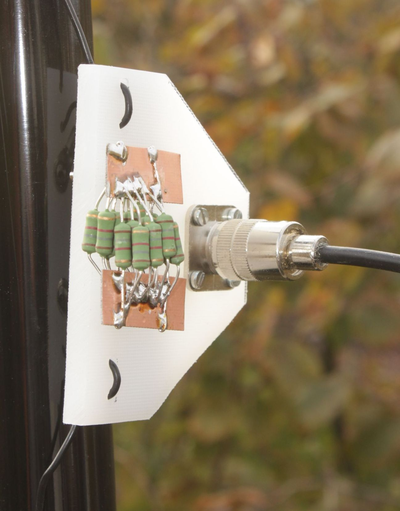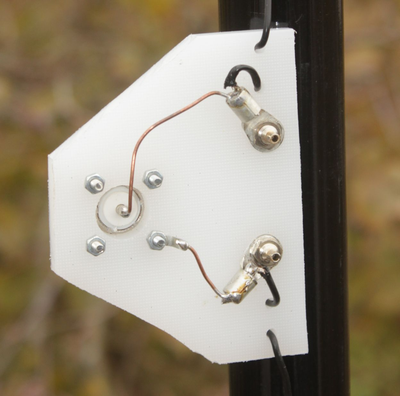I made a center
piece out of a PE plate (kitchen cutting board), which contains both a
PL socket for connecting a coaxial cable and two banana jacks. This is
documented in Figure 3 (top of the plate). At these two sockets, the
attachable resistance
(Figure 4)
can be connected from 18 parallel metal oxide film resistors with 1.8 KΩ
/ 2 Watt or a two-wire cable. To complete, Figure 5 shows the underside
and Figure 6 the plate with inserted resistor. This gives you a total of
three options:
1. Antenna with 100
Ω parallel
resistor and coaxial cable connection
2. Direct connection
for coax supply via PL socket without resistors
3. Connection of a
two-wire cable ("chicken ladder")
The antenna wire of
the pattern antenna is of the type DX-Wire-FL and consists of insulated,
hard-drawn copper wires. This is flexible, but very tensile. This can
also be a free hanging
The antenna wire of
the pattern antenna is of the type DX-Wire-FL [3] and consists of
insulated, hard-drawn copper wires. This is flexible, but very tensile.
This also allows a freely suspended antenna to be created between two
guying points. Whether insulated or uninsulated wire is used is for the
intended purpose but absolutely uncritical.






